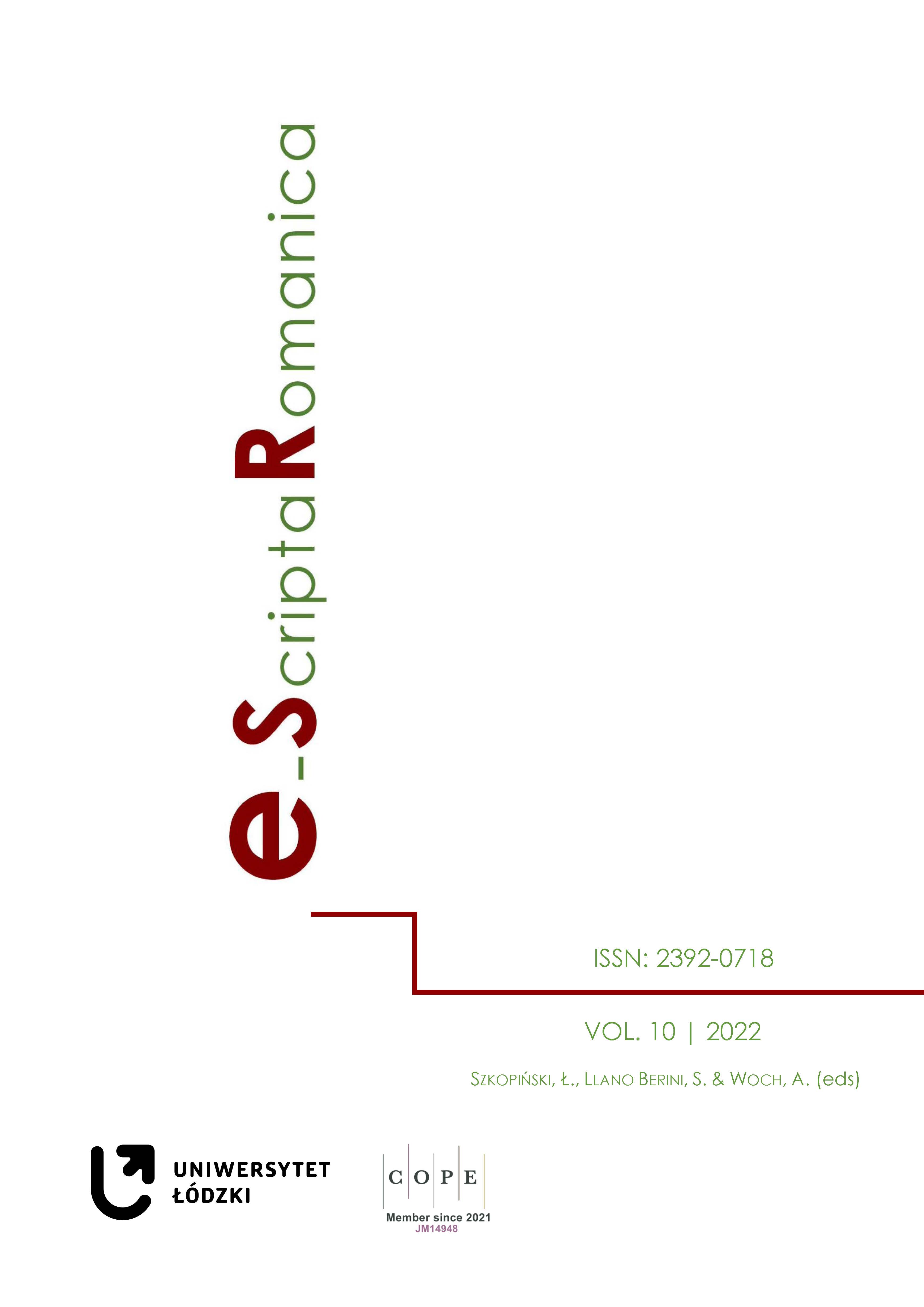Escritura ensayística y “palabra inobediente” en Tomás Segovia
DOI:
https://doi.org/10.18778/2392-0718.10.05Parole chiave:
ensayo, Tomás Segovia, filosofía, ética, políticaAbstract
El objetivo de este trabajo es examinar, con base en un texto de Tomás Segovia, algunos rasgos primordiales, tanto generales como específicos en el autor hispano-mexicano, de la escritura ensayística. Primero, se ofrece una breve semblanza biográfica de Segovia; luego, se proporcionan algunos comentarios sobre la naturaleza del ensayo como forma o género literario. A continuación, se comentan rasgos formales y temáticos del ensayo segoviano, “La palabra inobediente”, en el que destaca la combinación de elementos filosófico-literarios, el sentido de responsabilidad social, y el carácter errante, libre, de la escritura.
Riferimenti bibliografici
(2002). Entretien avec Tomás Segovia, Caravelle, 78, pp. 233-252. https://www.persee.fr/docAsPDF/carav_1147-6753_2002_num_78_1_1362.pdf [11/12/2021].
Google Scholar
DOI: https://doi.org/10.3406/carav.2002.1362
AMARA, L. (2012). El ensayo ensayo. Letras Libres, 158, pp. 22-27. https://letraslibres.com/revista-mexico/el-ensayo-ensayo/ [11/12/2021].
Google Scholar
CASTAÑÓN, A. (1987). El ensayo o el arte de opinar. Extensión, 25, pp. 86-88. https://cdigital.uv.mx/handle/123456789/48067 [11/12/2021].
Google Scholar
COLOMBI, B. (2007). Representaciones del ensayista. The Colorado Review of Hispanic Studies, 5, pp. 25-36.
Google Scholar
DOMÍNGUEZ, M. C. (2011). Tomás Segovia: Luz de aquí. Letras Libres. https://letraslibres.com/wp-content/uploads/2016/05/0156-entrevista01-m.pdf [11/12/2021].
Google Scholar
FLUSSER, V. (1967). Ensayos, trad. P. Katchadijian. http://hum.unne.edu.ar/asuntos/concurso/archivos_pdf/flusser.pdf [11/12/2021].
Google Scholar
GÓMEZ-MARTÍNEZ, J. L. (s.f.). La voluntad de estilo en el ensayo. https://www.ensayistas.org/curso3030/glosario/ensayo/estilo.htm [11/12/2021].
Google Scholar
GONZÁLEZ DUEÑAS, D., TOLEDO, A. (2011). Tomás Segovia: Los ojos abiertos a la noche. La Colmena, 72, pp. 57-63. https://ri.uaemex.mx/handle/20.500.11799/61046 [11/12/2021].
Google Scholar
GOOD, G. (1988). The Observing Self. Rediscovering the Essay. London and New York: Routledge.
Google Scholar
MAFFESOLI, M. (2004). El nomadismo. Vagabundeos iniciáticos. México: FCE.
Google Scholar
MÜLLER, W. G. (2017). An Elusive Genre? An Attempt to Define the Essay. In FLOTHOW, D., OPPOLZER, M. & COELSCH-FOISNER, S. (eds.), The Essay: Forms and Transformations. Heidelberg: Winter Verlag, pp. 1-14.
Google Scholar
SEGOVIA, T. (2005). Recobrar el sentido. Madrid: Trotta.
Google Scholar
SEGOVIA, T. (2011). Digo yo. Ensayos y notas. México, D.F.: FCE.
Google Scholar
SICOT, B. (2000), De «nepantla» à Ithaque: l’écriture sans limites de Tomás Segovia. Caravelle, 74, pp. 211-226. https://www.persee.fr/doc/carav_1147-6753_2000_num_74_1_1235 [11/12/2021].
Google Scholar
DOI: https://doi.org/10.3406/carav.2000.1235
WEINBERG, L. (2007). Pensar en el ensayo. México: Siglo XXI editores.
Google Scholar
ZIMA, P. V. (2012). Essay/Essayismus. Zum theoretischen Potential des Essays: Von Montaigne bis zur Postmoderne. Würzburg: Königshausen & Neumann.
Google Scholar
Downloads
Pubblicato
Come citare
Fascicolo
Sezione
Licenza

Questo lavoro è fornito con la licenza Creative Commons Attribuzione - Non commerciale - Non opere derivate 4.0 Internazionale.











